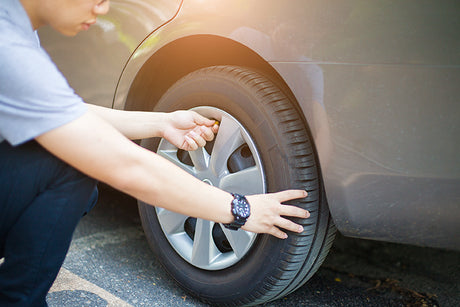Understanding how to identify irregular tyre wear is crucial for maintaining road safety and getting the most out of your tyres. Irregular tyre wear can be a sign of underlying issues with your vehicle, and being able to spot it early can save you from costly repairs and potential safety hazards. In this article, we'll provide helpful hints and tips for you to identify irregular tyre wear.
Understanding Irregular Tyre Wear
Before we delve into how to identify irregular tyre wear, it's important to understand what causes it. Irregular tyre wear can be caused by a variety of factors, including improper tyre inflation, misaligned wheels, worn-out suspension components, and improper tyre balancing. Aggressive driving, poor road conditions, and lack of regular tyre maintenance can also contribute to irregular wear patterns.
Helpful Hints and Tips
1. Regularly Check Tyre Pressure
Use a tyre pressure gauge to check the pressure at least once a month, especially before long trips. Underinflated tyres are more prone to overheating and excessive wear on the tyre edges, while overinflated tyres can lead to premature wear at the center of the tread.
Tip: Refer to your vehicle's manual or the sticker inside the driver's side door for the recommended tyre pressure.
2. Inspect Tread Depth
Sufficient tread depth is essential for maintaining traction on wet roads and preventing hydroplaning.Use the "coin test" to check if the tread depth is sufficient. Insert a 20-cent coin into the tread with the kiwi facing down. If the tread doesn't reach the top of the kiwi's head, it's time to replace the tyre.
Tip: Uneven tread wear can indicate improper wheel alignment or suspension issues.
3. Look for Uneven Wear Patterns
Inspect the tyres for signs of uneven wear, such as one side of the tyre wearing out faster than the other. Uneven wear patterns may indicate issues with wheel alignment, suspension components, or even improper tyre rotation.
4. Check for Vibrations or Pulling
Pay attention to any vibrations or pulling to one side while driving, as these can indicate tyre or wheel balance issues. Ignoring vibrations or pulling can lead to further damage to the tyres, suspension, and steering components, compromising safety.
Tip: If your vehicle pulls to one side, it may be a sign of misaligned wheels.
5. Seek Professional Inspection
If you notice any irregular wear patterns or experience unusual driving characteristics, it's important to have your tyres and vehicle inspected by a qualified technician. Qualified technicians can identify underlying issues that may not be visible to the untrained eye, ensuring optimal tyre performance and vehicle safety.
Tip: Regular wheel alignments and tyre rotations can help prevent irregular tyre wear and prolong tyre life.
By following these helpful hints and tips for identifying irregular tyre wear, you can ensure your safety on the road and prolong the life of your tyres. Remember, proper tyre maintenance contributes to fuel efficiency and a safer driving experience.








